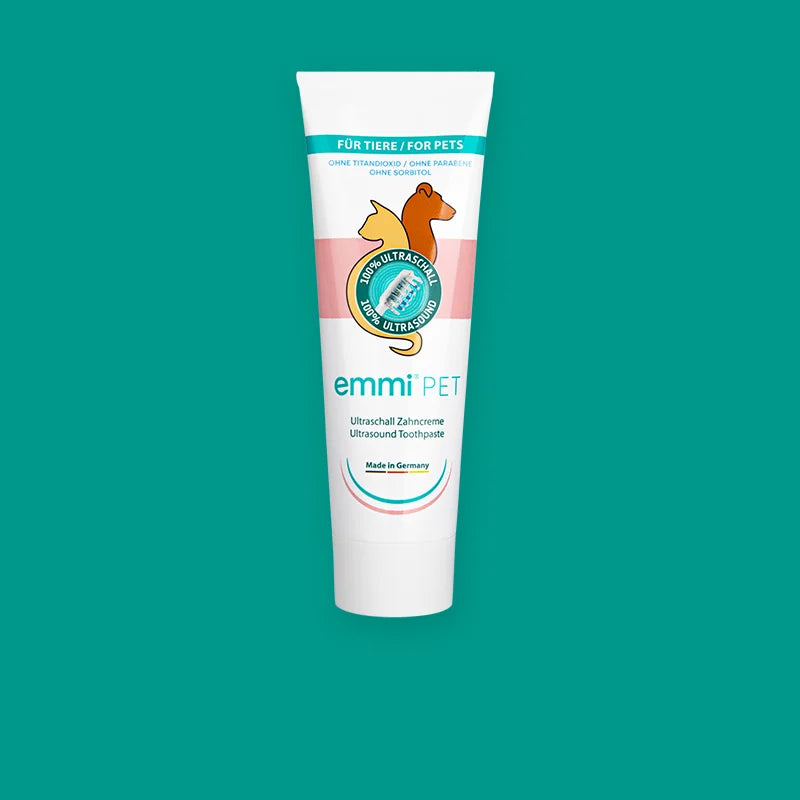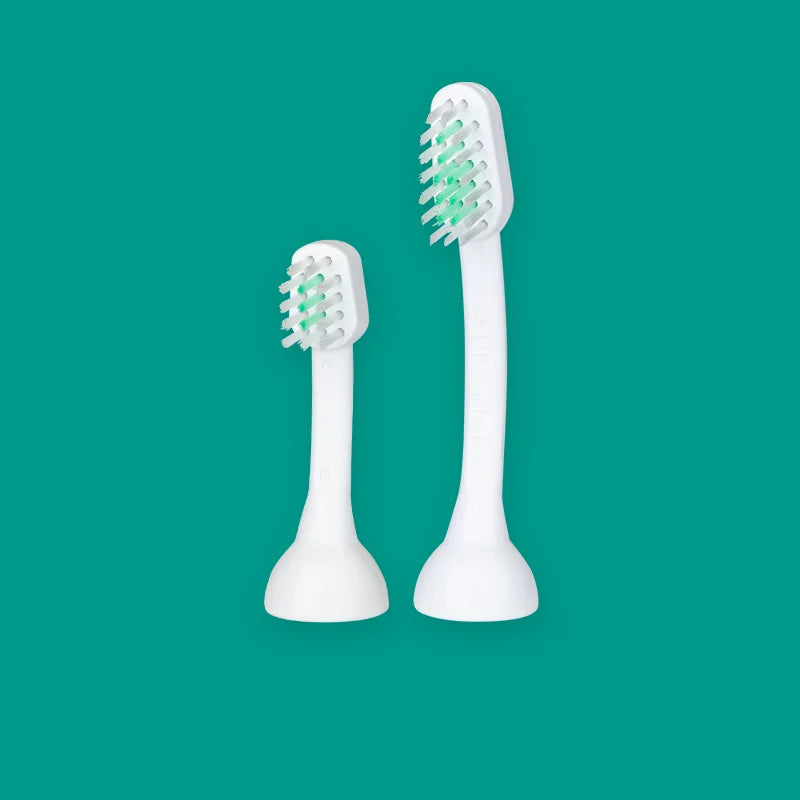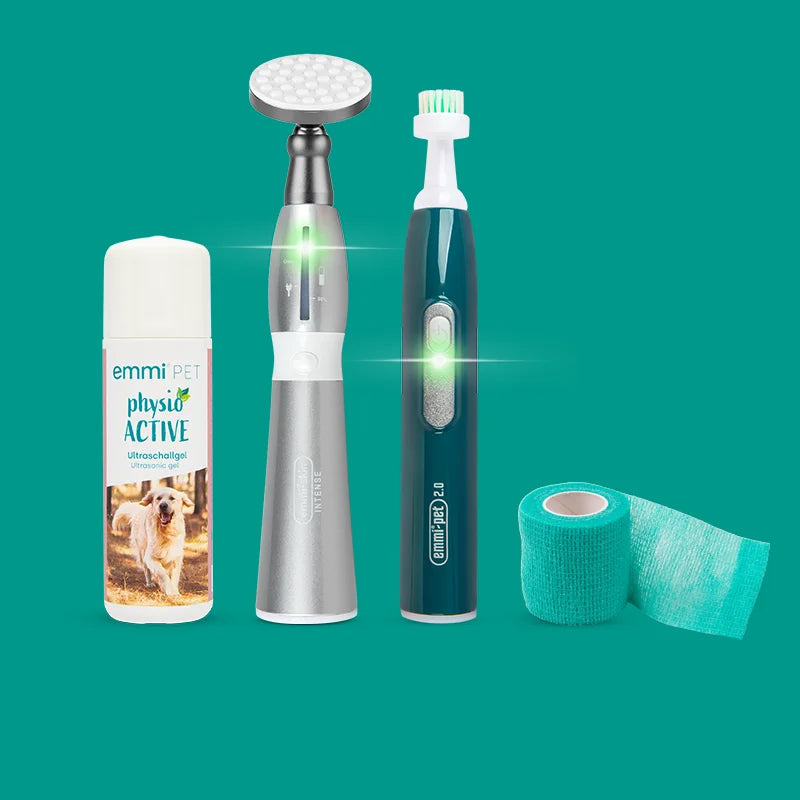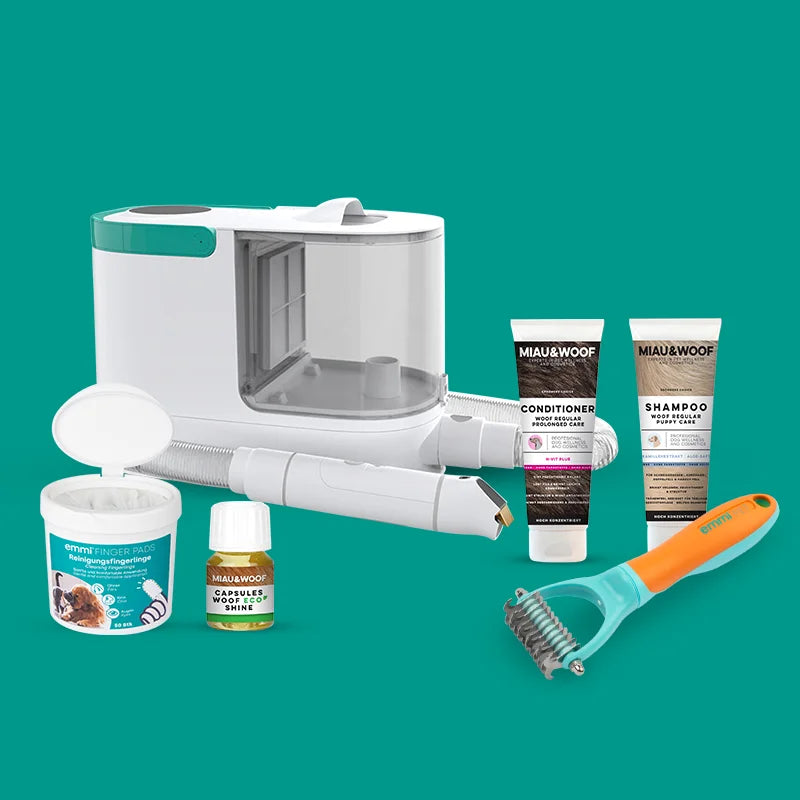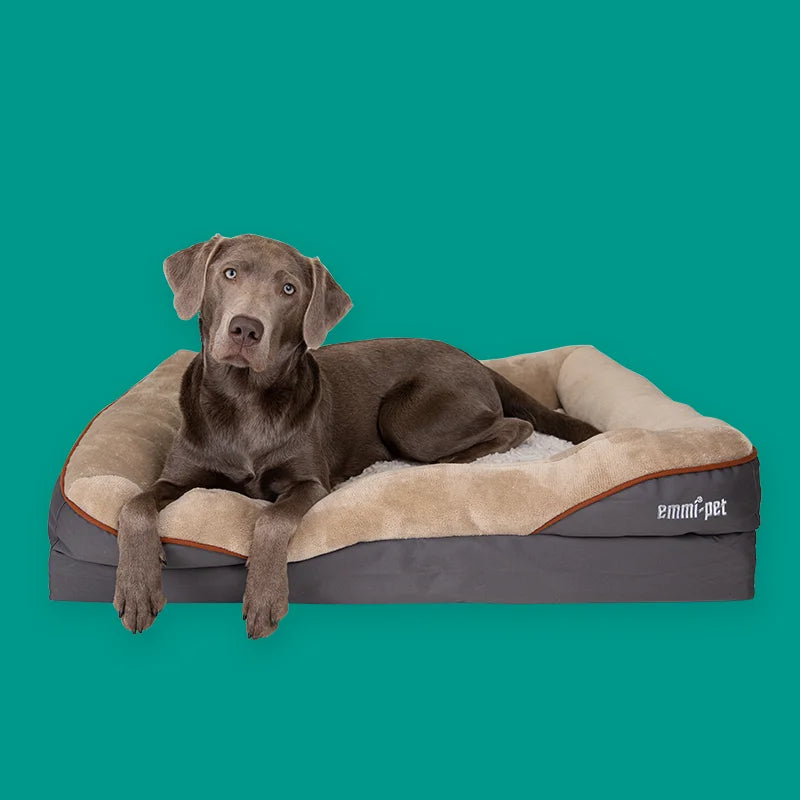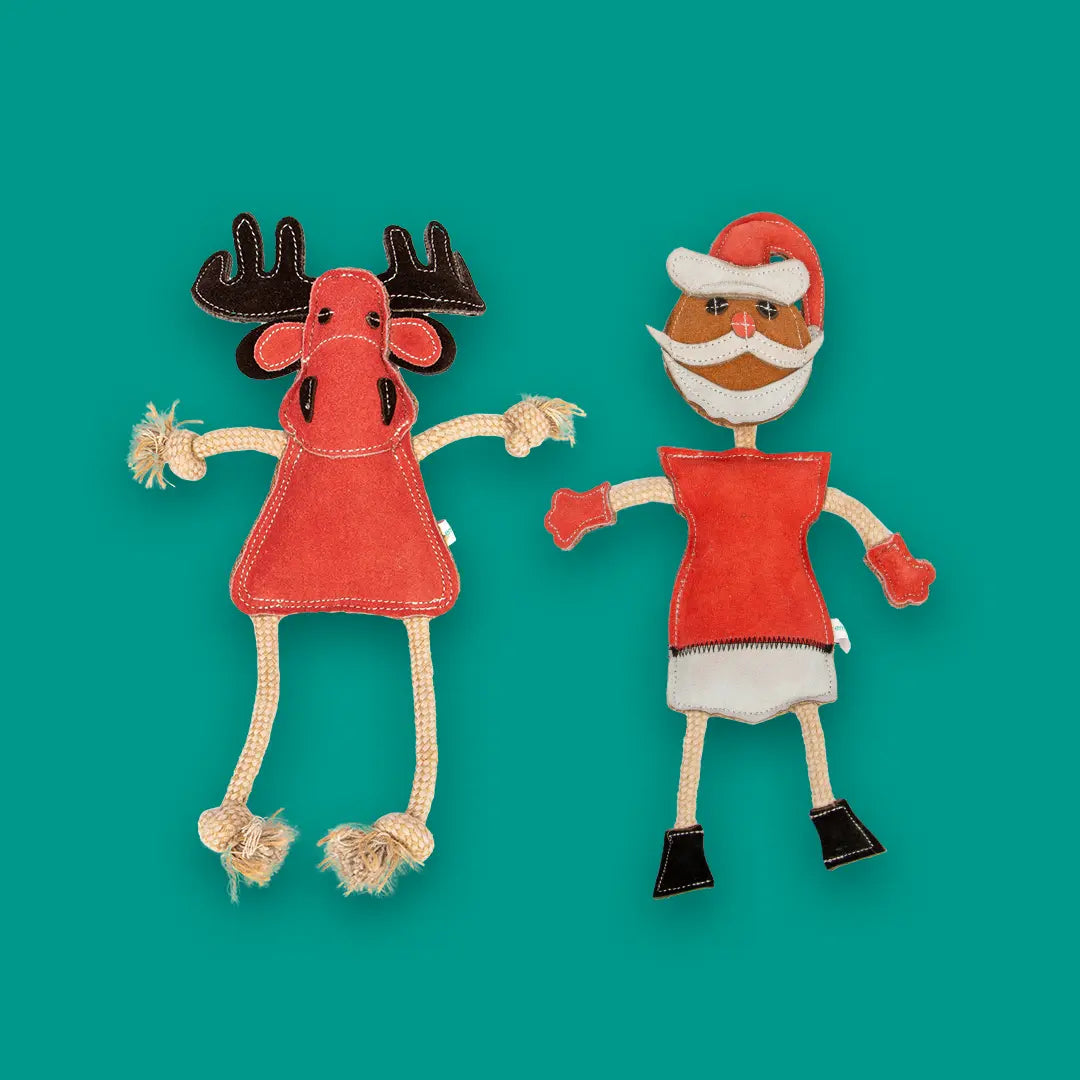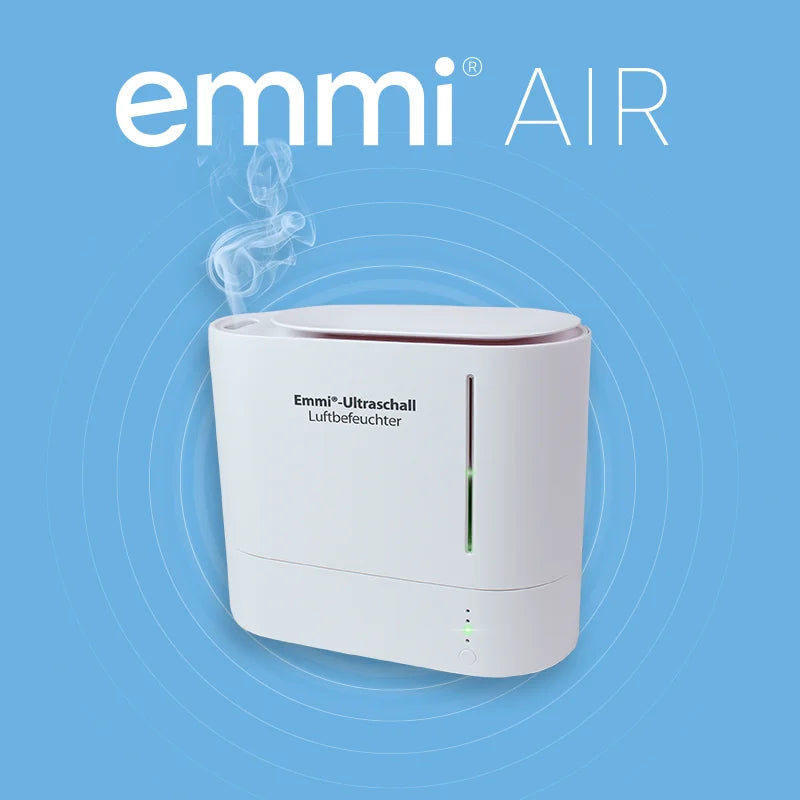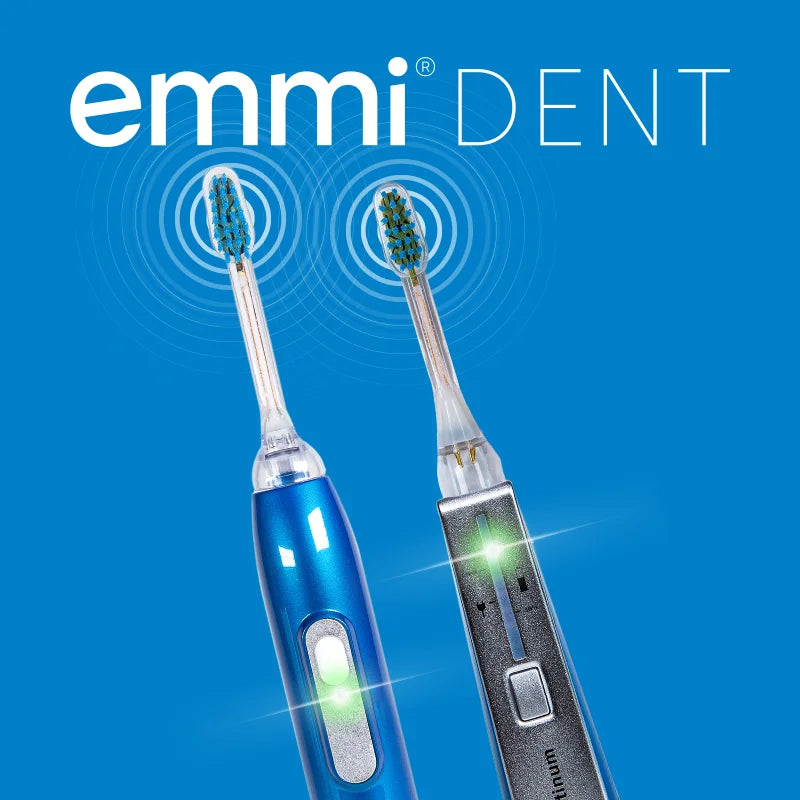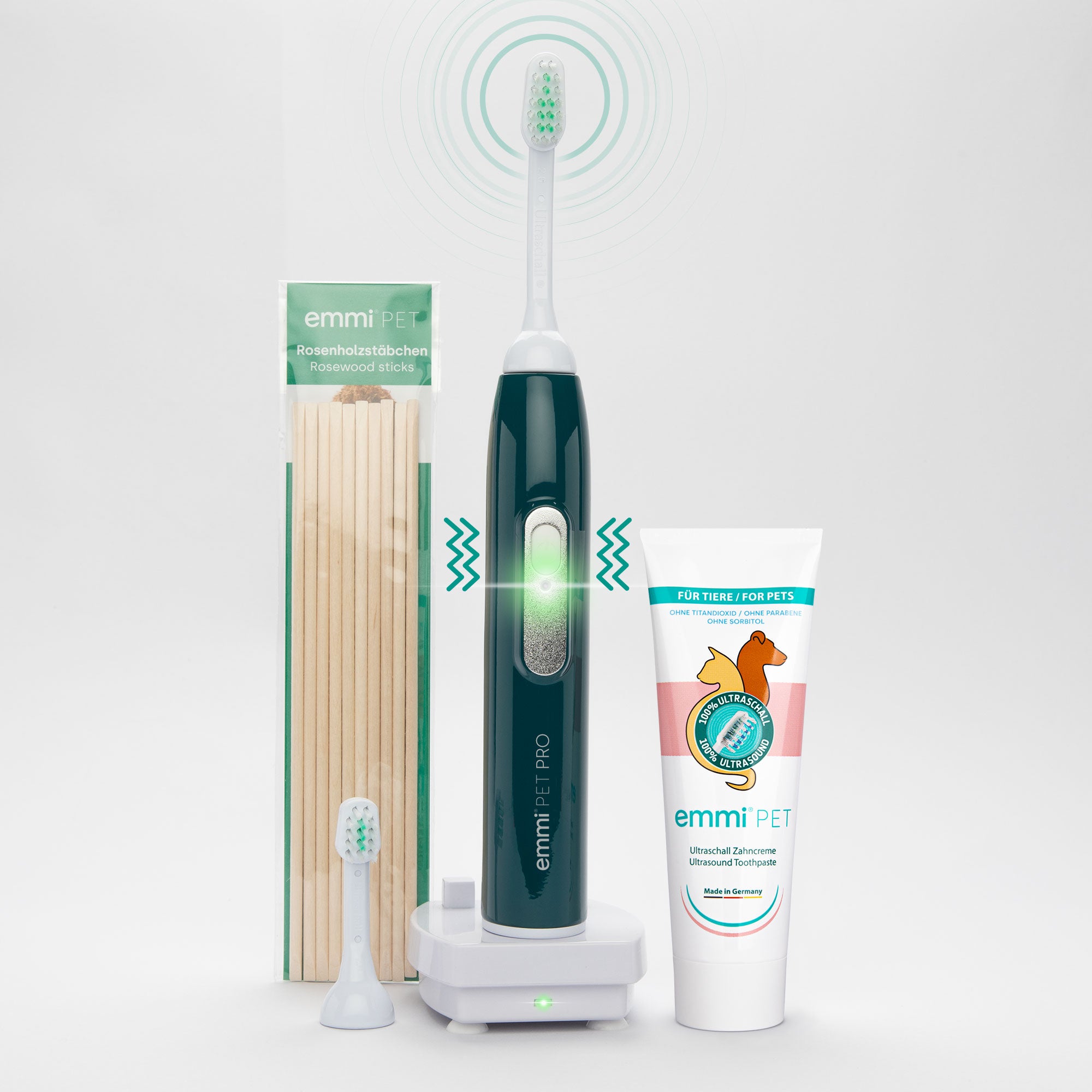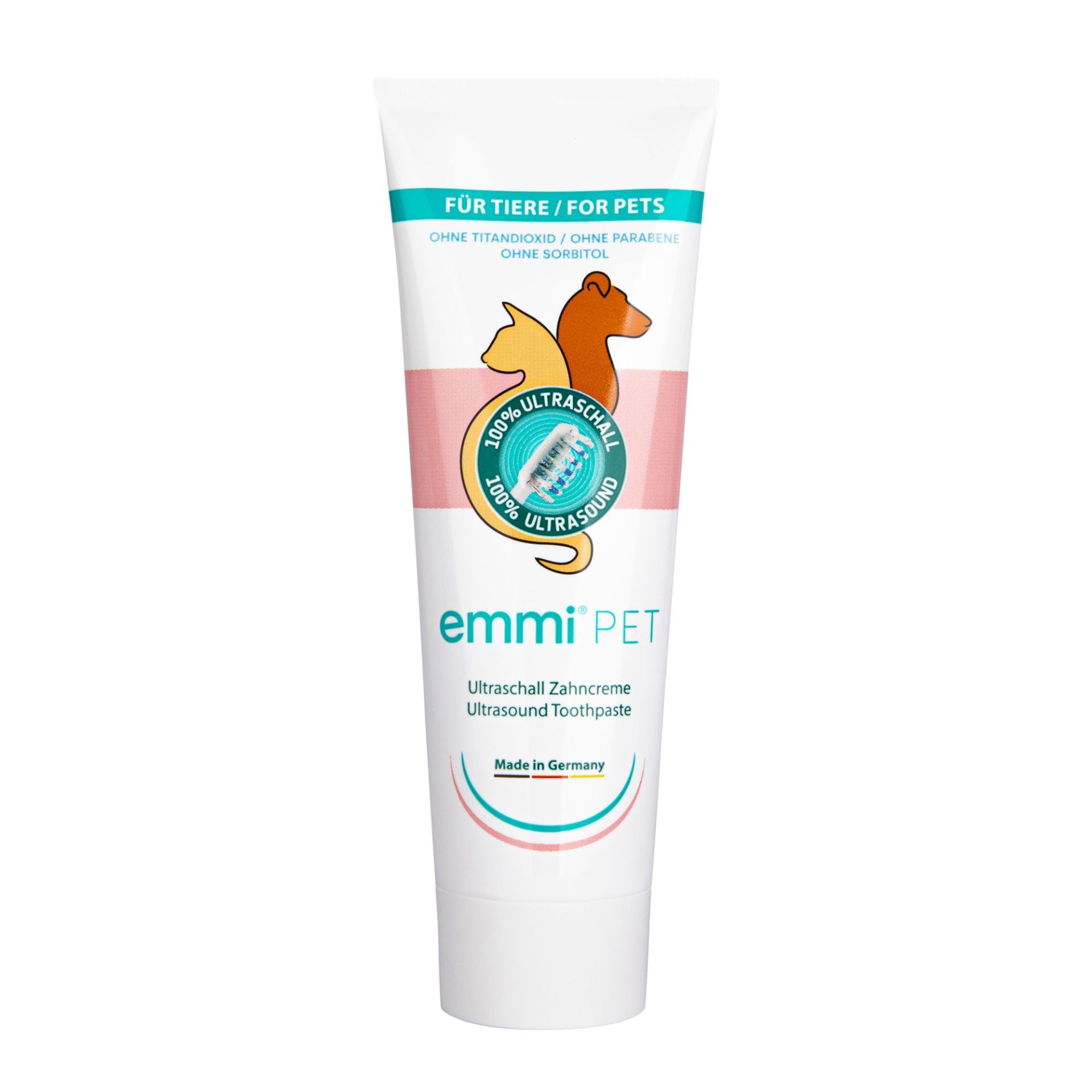Dentistry is a common topic for both cats and dogs. After annual vaccinations, toothache is the most common reason pet owners visit their veterinarian. In today's blog post, we explain how to identify and, above all, prevent dental problems in pets.
The most common reason for bringing four-legged friends to the vet is chronic gum inflammation. A particularly dangerous condition is that gingivitis can gradually spread throughout the entire oral cavity.
Particularly tragic: Gum inflammation almost always leads to cervical caries. Affected teeth often have to be completely extracted. The tooth structure is almost completely destroyed by the caries bacteria that develop from chronic gum inflammation, resulting in the opening of the root canal. This causes incredibly severe pain in affected four-legged friends.
The frequency and severity of dental diseases in pets demonstrates the importance of early dental care for dogs and cats. With the emmi®-pet Basic Set, you can promote your four-legged friend's dental health. Plaque and bacteria are killed painlessly, gently, and above all, thoroughly.
Toothache in dogs and cats
Dental problems in dogs and cats are often characterized by bad breath. This is caused by sulfur gases produced by the breakdown of bacterial proteins. The inflammation progresses, destroying the periodontal membrane and leading to tooth decay. This, in turn, sooner or later, leads to toothache.
Excessive salivation can also be a warning sign of dental disease and toothache. Refusal to eat despite an appetite, as well as gulping or one-sided chewing, can be signs of dental problems. Chronic gingivitis, exposed tooth necks, or receding gums can lead to pain.
Tartar, tooth loss, and periodontitis can lead to serious and systemic complications in the long term. Heart, liver, and kidney disease are often associated with long-term dental problems. Diabetes can also occur as a result of dental disease.
Diagnosis for dogs and cats at the dentist
The first step in diagnosis is an x-ray of the affected tooth. Based on these images, the veterinary dentist makes treatment decisions. While existing gum inflammation can initially be treated with medication, severely affected teeth often require removal.
Caution is key here, because gingivitis – if left undetected and untreated for a long time – can lead to the extraction of affected teeth. In most cases, this is the only way to restore your beloved four-legged friend's quality of life.
To prevent this from happening, we recommend regular dental care with our emmi®-pet ultrasonic toothbrush. Our emmi®-pet basic set is ideal for getting started with dental care based on ultrasonic technology.
Factual knowledge: Which veterinarian is authorized to treat animal teeth?
The title of veterinary dentist or animal dentist is not a separate field of study within the field of veterinary medicine. Nevertheless, there are numerous veterinarians who continue to pursue further training and specialize in this field. Additional qualifications of this kind are available in many areas of veterinary medicine.
Veterinarians who specifically identify themselves as veterinary dentists or animal dentists often indicate their specialty with the additional designation: veterinary dentistry. Based on this designation, you can assume that the veterinarian is familiar with the entire spectrum of possible dental diseases in cats, dogs, and other companion animals.
From simple tooth fractures to malocclusions, malocclusions of the upper or lower jaw, as well as dental preservation, treatment, and prevention, these veterinarians are highly experienced. Of course, veterinarians without the additional designation can also specialize in veterinary dentistry and perform outstanding work in this field.

